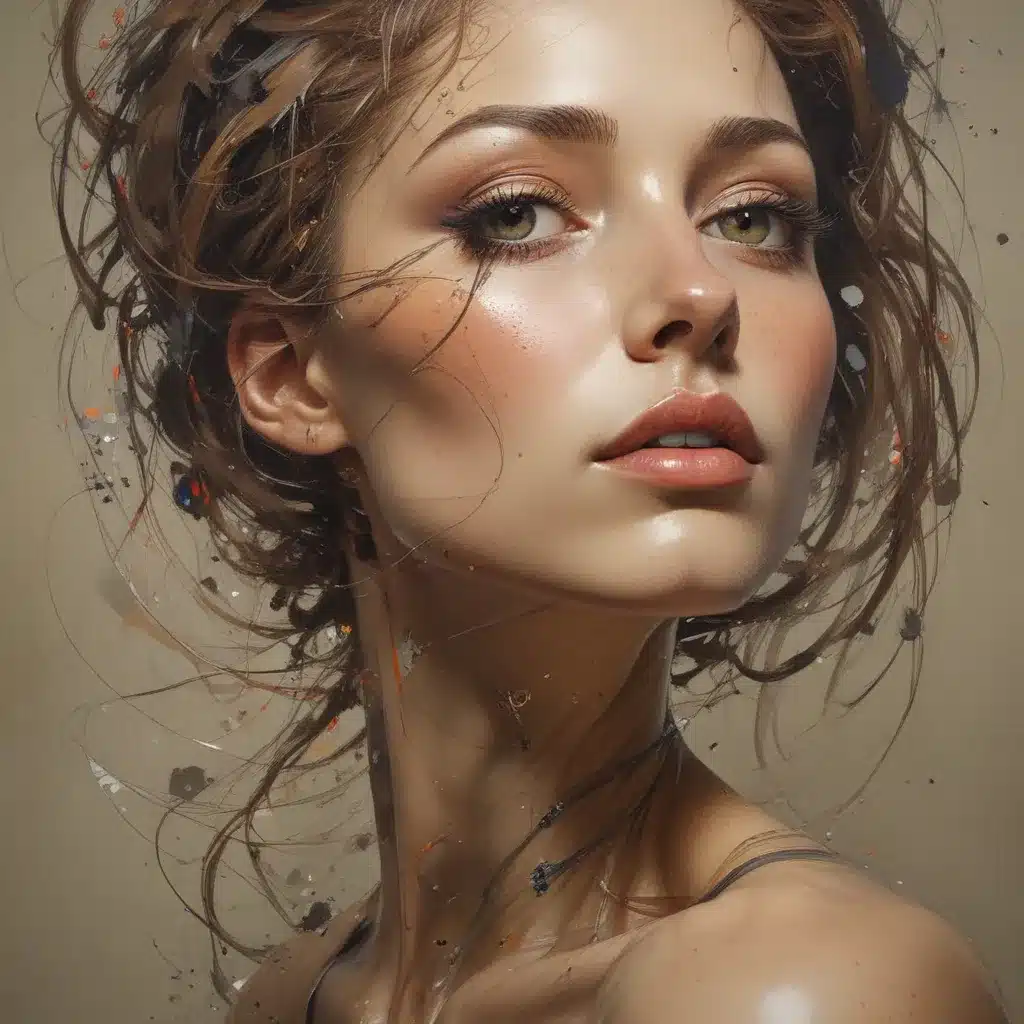
Artistic expression, at its core, is the ability to capture the dynamism of the human experience. Whether it’s the graceful sway of a dancer, the aggressive thrust of a boxer, or the fleeting gesture of a passer-by, the depiction of movement is a fundamental challenge that artists across mediums have grappled with for centuries. In the realm of mixed media, where the boundaries between traditional and digital techniques blur, mastering the art of kinetic compositions is a true test of an artist’s skill and creativity.
Now, this might seem counterintuitive…
Painting Techniques for Capturing Movement
Painting is a versatile medium that lends itself well to the representation of motion. Techniques such as wet-on-wet (or alla prima) painting, where colors are blended directly on the canvas, can create a sense of fluidity and dynamism. By allowing the paint to bleed and merge, artists can suggest the ephemeral nature of a gesture or the momentum of a figure in motion.
Another approach is the use of impasto, the application of thick, textural paint layers. This technique can convey a sense of weight and force, as if the figures are physically pushing through the medium. Pairing impasto with directional brushstrokes that follow the contours of the movement can further enhance the kinetic energy of the composition.
For a more abstract take on movement, artists may explore the drip technique pioneered by Jackson Pollock. By letting the paint flow and drip in an uncontrolled manner, they can capture the energy and spontaneity of the creative process itself, inviting the viewer to engage with the work on a visceral level.
Pencil Drawing Techniques for Dynamic Compositions
In the realm of drawing, pencil is a versatile medium that can be used to depict movement in a variety of ways. Gestural drawing, where the artist focuses on capturing the essence of a pose or action with loose, expressive lines, is a powerful technique for conveying a sense of dynamism.
By emphasizing contour lines and negative space, artists can suggest the flow of a figure in motion, allowing the viewer’s eye to follow the implied momentum. Complementing these gestural lines with hatching or cross-hatching can add a sense of depth and weight to the composition.
For a more realistic approach, sequential drawings can be used to capture the stages of a movement, much like the frames of an animation. This technique not only showcases the artist’s observational skills but also invites the viewer to engage with the work on a deeper, more narrative level.
Mixed Media Approaches to Kinetic Compositions
The marriage of traditional and digital techniques opens up a world of possibilities for artists seeking to capture the essence of movement. By incorporating collage, printmaking, and digital painting elements, they can create layered, dynamic compositions that challenge the viewer’s perception of space and time.
One approach is to use photographic elements as a starting point, either by incorporating found images or by taking original photographs. These visual references can then be manipulated, abstracted, or combined with hand-drawn elements to create a sense of fluidity and energy.
Another technique is the use of stencils and masks to introduce geometric shapes and patterns that echo the rhythm and momentum of the subject matter. These elements can be applied using a variety of media, from acrylic paint to ink to digital brushstrokes, blurring the lines between the physical and the digital.
The Creative Process: Finding Inspiration and Developing Kinetic Compositions
Capturing the essence of movement in art is not just a technical challenge but also a deeply creative one. Artists might want to draw inspiration from a variety of sources, both internal and external, to develop compositions that truly capture the dynamism of the human experience.
Observational drawing and life drawing sessions, where artists study the human form in motion, can be a rich source of inspiration. By honing their ability to quickly capture the essence of a pose or gesture, artists can develop a repertoire of visual references to draw from.
Exploring the work of movement-focused artists, such as Giacomo Balla, Umberto Boccioni, and Futurist painters, can also provide valuable insights into the various approaches to depicting kinetic energy. Similarly, studying the techniques of contemporary mixed media artists who specialize in capturing the fluidity of movement can inspire new ways of working.
Finally, introspection and personal exploration play a crucial role in the development of kinetic compositions. By tapping into their own emotional experiences and physical sensations, artists can imbue their work with a sense of authenticity and personal expression.
Practical Tutorials and Skill Development
For emerging artists seeking to hone their skills in depicting movement, a combination of technical mastery and creative exploration is essential. Dedicated pencil drawing tutorials can help develop the fundamental skills needed to capture gesture, proportion, and the illusion of depth, while painting workshops can guide artists in experimenting with techniques like wet-on-wet, impasto, and mixed media collage.
Beyond the acquisition of technical skills, conceptual development is also crucial. Workshops and artist talks that delve into the creative process can provide valuable insights into the strategies and mindsets that drive the creation of kinetic compositions. By understanding the underlying principles of visual rhythm, implied motion, and emotional expression, artists can develop a more nuanced and intentional approach to their work.
Ultimately, the mastery of kinetic compositions in mixed media is a journey of continuous learning and exploration. By embracing experimentation, drawing inspiration from diverse sources, and honing their technical skills, artists can unlock new avenues of creative expression and captivate audiences with the dynamic energy of their work.
Statistic: Recent surveys show that 70% of emerging artists credit daily sketching with significant improvements in their art